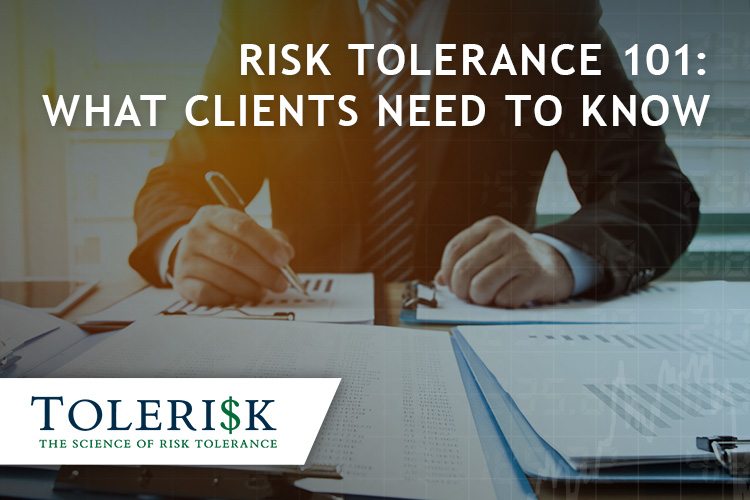Financial Risk Tolerance 101: What Clients Need to Know
11 May 2017

The average investor knows that there are tradeoffs between risk and reward when it comes to investing. But do they recognize the important role of accurately measuring their true risk tolerance? Do they understand why selecting the right risk level both now and in the future is so critical to their success in achieving their goals?
Most advisors confess that the answer is often “no.” Further, they say financial risk tolerance is often difficult to convey and make it meaningful. So, here’s a crash-course in Risk Tolerance 101 so you can provide your clients with all they need to know about this critical concept.
Risk Tolerance: Willingness to Accept Risk vs. Ability to Take Risk – Know The Difference
True risk tolerance is the appropriate combination of an individual’s willingness to accept risk and their actual ability to take risk. These two critical components are independent and cannot be combined by simply adding or averaging them together.
A person’s ability to take risk is an objective analysis of the complete chronology of their cash-flows, which incorporates their assets, expenses, savings, capital inflows and outflows. Ideally, they should be analyzed incorporating differing tax consequences of cash-flows as well. The farther out in time a dollar is being used, the greater “its” ability to take risk. A dollar being used tomorrow has zero ability to take risk. So, a person’s ability to take risk is the aggregate combination of the ability for risk exposure of all of their future cash-flows.
A person’s willingness to accept risk indicates the point at which they will let their emotions facilitate a mistake in their investment decisions. The cost of such an emotional mistake often outweighs the long term benefit of having an otherwise greater risk level. A client’s willingness to accept risk becomes a more relevant constraint when their ability to take risk is higher. For a person with a very low ability to take risk, their personality may be irrelevant (e.g. if the client is using all of their savings to buy a house tomorrow, how they score on a personality profile is useless, since their ability to take risk with their funds is zero.)
A Good Risk Tolerance Assessment Process and Why You Need It
A risk tolerance assessment is the process of determining the client’s true risk tolerance and guiding them to select the best risk directive or model portfolio to achieve their goals. Unfortunately, most financial advisors fall victim to inadequate questionnaires that provide vague results for their clients. These questionnaires typically only account for a client’s willingness to accept risk without incorporating their ability to take risk into the equation. What financial advisors really need is a risk tolerance assessment tool that provides comprehensive and accurate results.
According to a Kiplinger article, financial advisors need to be both disciplined and objective when it comes to accurately determining the risk tolerance level of their clients. In addition, advisors need to utilize the right resources and tools. The right risk tolerance assessment tool will analyze the client’s willingness and ability to take market risk, providing reliable and actionable results for the advisor and client. By considering a variety of client specific factors, the risk tolerance assessment tool can produce superior results for both the advisor and their client.
When you’ve armed your clients with the information they need about true risk tolerance and the importance of a good risk tolerance assessment, you can turn your focus to advising them on selecting the right portfolio to achieve their goals.
With Tolerisk®, you are able to determine the true risk tolerance for each client and document your consistently diligent process for advising them on the right risk directive. Your comprehensive report is filled with actionable information helpful to you and your client. Your consistently custom approach will be appreciated by your clients as well as your compliance department. For more information on the benefits of Tolerisk®, contact us today.